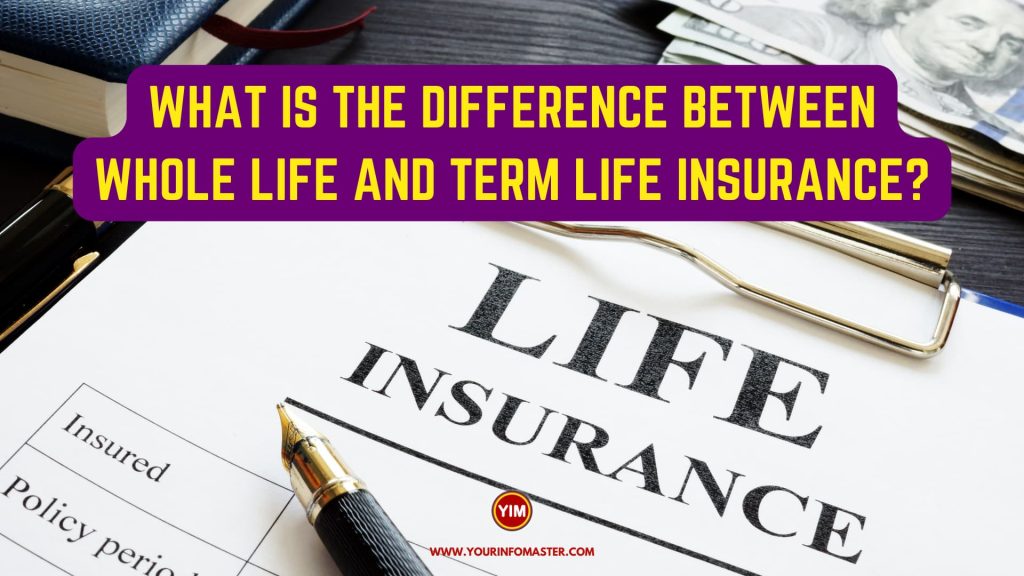I am going to explain the blog post “What is the difference between Whole Life and Term Life Insurance?“
What is the difference between whole life and term life insurance? When it comes to protecting your loved ones financially, understanding the nuances between these two popular life insurance options is essential.
In this comprehensive article, we will explore the distinctions between whole life and term life insurance, shedding light on their features, benefits, and suitability for different needs. By grasping these differences, you can make informed decisions and secure the financial well-being of your family.
Check also: What’s the Difference between TSA Pre and Global Entry?
5 Differences Between Whole Life and Term Life Insurance
Here is a list of 5 key differences between whole life and term life insurance, providing valuable insights into their unique characteristics and implications for your financial security.
List of 5 differences between Whole Life and Term Life Insurance:
- Duration of Coverage
- Premium Payments
- Cash Value Accumulation
- Policy Flexibility
- Cost Considerations
Check also: What’s the difference between apple watch 6 and 7?
Detail of 5 Differences between Whole Life and Term Life Insurance
Here is the detail of 5 differences between Whole Life and Term Life Insurance:
- Duration of Coverage
- Whole Life Insurance: Whole life insurance provides coverage for the entire lifetime of the insured individual.
- Term Life Insurance: Term life insurance offers coverage for a specific term or duration, typically ranging from 10 to 30 years.
- Premium Payments
- Whole Life Insurance: Premium payments for whole life insurance tend to be higher and remain consistent throughout the life of the policy.
- Term Life Insurance: Term life insurance premiums are generally lower, but they increase with age as the risk of mortality rises.
- Cash Value Accumulation
- Whole Life Insurance: Whole life policies accumulate cash value over time, which can be accessed or borrowed against during the insured’s lifetime.
- Term Life Insurance: Term life insurance policies do not build cash value; they solely provide a death benefit for the specified term.
- Policy Flexibility
- Whole Life Insurance: Whole life policies often offer more flexibility, allowing policyholders to adjust coverage amounts, access cash value, and customize benefits.
- Term Life Insurance: Term life policies are typically more straightforward, offering fixed coverage for a specific term without additional customization options.
- Cost Considerations
- Whole Life Insurance: Whole life insurance is generally more expensive due to its lifelong coverage and cash value accumulation.
- Term Life Insurance: Term life insurance is more affordable initially, making it an attractive choice for individuals seeking temporary coverage or on a limited budget.
Check also: What is the difference between ETF and index fund?
Conclusion
In conclusion, understanding the difference between whole life and term life insurance is crucial for securing your financial future. While whole life insurance offers lifelong coverage, cash value accumulation, and policy flexibility, term life insurance provides temporary coverage at a more affordable cost. By evaluating your specific needs and financial goals, you can choose the insurance option that aligns best with your circumstances and provides the necessary protection for your loved ones.
See also: What is the difference between medicare A and B?
If you really enjoyed the article “What is the difference between Whole Life and Term Life Insurance?,” then I would be very grateful if you’d help it spread by emailing it to your friends or sharing it on Twitter, Instagram, or Facebook. Thank you!
Have you read “What is the Difference between Whole Life and Term Life Insurance?“ Which of these blogs are you reading, and how is it similar to one of them?

